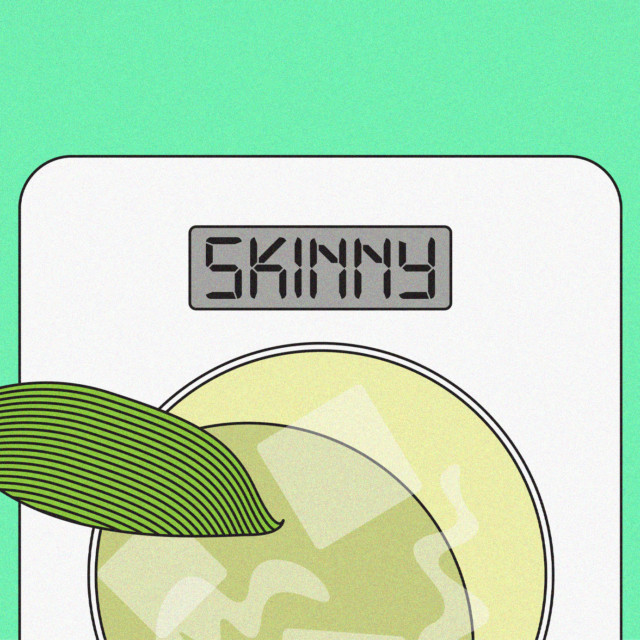The year was 2008 when entrepreneur and former “Real Housewives of New York” star Bethenny Frankel changed the cocktail scene forever. “I only drink one drink, and I call it the skinny girl’s Margarita,” she said in a Season 1 episode of RHONY. The mogul proceeded to order a simple drink, made with Patron silver, fresh lime juice, and a little splash of triple sec, served on the rocks.
The idea was to enjoy a lower-calorie, lower-sugar version of the beloved Marg, and Bravo’s mostly female viewership quickly latched onto the concept. So much so, in fact, that Frankel reportedly sold her subsequent Skinnygirl RTD empire to Beam Suntory for $100 million just three years after the episode aired. In the years since, Frankel’s famous order went viral, and countless restaurants, cocktail bars, and clubs have added “skinny” cocktails to their menus, cashing in on the female-centered weight loss messaging that continues to permeate most every industry — from beauty and health, to food and drinks.
While promising to get consumers buzzed without affecting their waistlines, the “skinny” cocktail has left a pink-trimmed wreckage in its wake. “People wanting to make conscious decisions about what they’re drinking definitely had a part to play in the rise of the Skinny Margarita,” says Karen Grill, director of Rémy Cointreau’s Collectif 1806. Diet obsession has increased across the board among American consumers, and it comes as no surprise that the drinks industry is cashing in on the trend.
At first glance, “skinny” cocktails are just cocktails with less sugar and fewer calories than their counterparts — a swap that Denver-based naturopathic doctor Francesca Quinn stands behind. “In general, we all consume too much sugar, so less is definitely better,” she says. But beneath these seemingly harmless, helpful claims lies the insidious underpinnings of diet culture.
A phrase used to describe practices that prioritize physical appearance and weight loss over mental and physical well-being, diet culture uses shame to promote exercise, calorie counting, and more. The desire to be smooth, light, and, yes, skinny can lead to dysmorphic tendencies and eating disorders. Just last year, the latter killed over 10,000 people — a statistic that’s on the rise due to harmful messaging on social media, in movies, and on cocktail menus.
“Language is so important,” says Manhasset, N.Y.-based licensed social worker Gail Grace. “It gets into our minds and makes us think a certain way.” Calling a cocktail “skinny” might seem like an innocuous marketing term, but Grace says this kind of messaging causes far more harm than meets the eye. By painting “skinny” as a goal consumers should hope to achieve, these menu items creep into the subconscious and could be triggering for those already struggling with body dysmorphia. “Somebody that’s already having some negative feelings about their body, that just reinforces it,” Grace says. “That keeps that dialogue going internally.”
And it’s not just its name that makes the skinny cocktail a terrible sip. “A cocktail needs sugar to be balanced,” adds Grill. “It’s something that bartenders all understand, and we spend a lot of our careers trying to let our guests know that, ‘Yes, there is sugar in here, but yes, it’s what balances your cocktail.’” Removing sugar from a drink is like serving a meal without salt — it’s not going to taste great. Interestingly, though, notes Grill, is the fact that the classic Margarita specs don’t call for sweetening agents; just tequila, lime, and triple sec. While some modern recipes may add in simple syrup or agave nectar, well-made Margs are already “skinny” without needing to declare themselves as such.
Of course, this hasn’t stopped countless influencers from touting their own diet-friendly versions on social media; “Real Housewife of Orange County” Brauwyn Windham-Burke apparently orders hers both skinny and spicy, while “The Bachelorette” star Tayshia Adams mixes up her own skinny Marg using three types of citrus and leaving out the orange liqueur.
When “skinny” is the only descriptor of a drink, it’s also likely that many consumers don’t know what they’re ordering when they ask for one. While industry folks widely understand them to be low-sugar options, these drinks can have a wide range of meanings — from subbing liqueurs for fresh juice to omitting sugar entirely, the term is nothing more than a misleading marketing term, one that doesn’t accurately represent the indulgent, joyfully impractical spirit (no pun intended) of cocktails.
“We want [consumers] to understand that it’s like smoking a cigarette with less nicotine in it,” says Quinn. “It’s still not good for you.”
Of course, there’s nothing wrong with being mindful of what you put into your body, but as Grace mentions, the words we choose matter tremendously. Rather than calling their drinks skinny, why can’t bars and restaurants add a symbol to denote menu items that can be made without sugar, as many do with gluten-free or vegan options? Or alternatively, could the creative minds behind these drinks not come up with a new name for low-sugar options, one that comes without “skinny’s” baggage of shame and judgment? “There could be a name for a cocktail that could be so much more about connection,” says Grace. “Something so much more human.”
